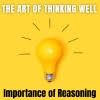Small Steps to Take When Feeling Like Giving Up

Blog Post
At some point, nearly everyone encounters moments of emotional fatigue, self-doubt, or overwhelming pressure- times when giving up feels like the easiest option. Whether it's a student facing academic burnout, an entrepreneur navigating business uncertainty, or a professional dealing with setbacks, the urge to quit can surface suddenly and strongly.
These moments are not a sign of weakness but a natural part of pursuing any meaningful goal.
Studies in behavioral psychology reveal that motivation is not constant, and persistence during low phases is often what separates long-term success from stagnation.
Instead of viewing these difficult moments as roadblocks, they can be reframed as opportunities to pause, reassess, and apply small, effective strategies that restore focus and energy.
This article explores practical, research-backed steps anyone can take to regain momentum- from managing self-doubt and visualizing success to building resilience through routine, reflection, and rest.
Because progress isn’t built on constant motivation- it’s built on consistent action, even on the days that feel the hardest.
How I Push Through When I Feel Like Giving Up
Understanding the Silent Struggle
Everyone encounters moments of discouragement and emotional fatigue. Whether it's a student overwhelmed by academic pressure or an entrepreneur navigating uncertainty, the urge to give up can feel intense.
This feeling is more common than often admitted. According to the American Psychological Association, stress, burnout, and self-doubt are among the top reasons people abandon goals. However, research consistently shows that perseverance- especially through adversity- is one of the most significant predictors of long-term success.
As Author Samuel Beckett once said: “Ever tried. Ever failed. No matter. Try again. Fail again. Fail better.”
The following strategies are practical, evidence-based methods to cope with moments of doubt and build resilience.
1. Acknowledge the Feeling- 'Without Judgment'
Psychologists emphasize that it’s normal to experience mental and emotional dips. Burnout, frustration, and the occasional desire to give up are not signs of weakness — they are signs of being human.
Research Insight:
A 2018 study published in Clinical Psychology Review highlights that self-compassion can significantly reduce stress and improve emotional well-being. Accepting emotional lows without guilt enables individuals to recover more quickly and maintain motivation.
Action Step: Rather than suppressing the urge to give up, acknowledge it.
Use phrases like: “It’s okay to feel this way. It doesn’t define the outcome."
2. Reconnect With the Purpose- 'Why'
Purpose fuels perseverance. When challenges arise, revisiting the core reason behind a goal can reignite motivation.
Psychological Principle:
According to Simon Sinek’s 'Start With Why' framework, people are more resilient when they understand the deeper reason behind their actions.
Example:
A student might be studying to improve their family’s future.
An entrepreneur may be working to solve a meaningful problem in society.
Action Step: Create a 'Why' journal or vision board with long-term goals, personal values, and people or causes worth fighting for.
3. Break the Task Into Small Steps
Large goals can be intimidating. Cognitive psychologists suggest that breaking them down into smaller, manageable tasks makes action more attainable.
Strategy in Action:
The Pomodoro Technique, developed by Francesco Cirillo, involves 25 minutes of focused work followed by a 5-minute break.
This method helps reduce overwhelm and boosts concentration.
Example:
Instead of studying 10 chapters, try study one topic for 30 minutes.
Key Idea: Momentum is built one small step at a time.
4. Build a Supportive Routine
Routines create structure that sustains motivation even during low-energy periods.
Rather than relying on bursts of inspiration, high performers rely on consistent daily habits.
Research-Based Insight:
In Atomic Habits, James Clear outlines how systems are more effective than goals because they support sustainable progress.
Sample Routine for Productivity:
- Morning: Gratitude journaling + Planning top 3 priorities
- Midday: Focused deep work (Pomodoro or time-blocking)
- Evening: Digital detox + Reflection
Tip: Students can use time-tables; entrepreneurs can batch tasks by theme (e.g., marketing Mondays, product development Tuesdays).
5. Reframe Failure as Feedback
Failure is not a dead-end- it’s a detour to growth.
Research from Stanford psychologist Carol Dweck underscores the value of a growth mindset, where challenges are viewed as opportunities to learn.
Reframe Example:
- “This didn’t work out, so what can be improved?”
- “This setback is temporary, but the lesson is lasting.”
Practice: Maintain a “Lessons Learned” journal to document setbacks and extract insights.
6. Seek Support and Connection
Talking to someone can reduce mental load and provide clarity.
According to the National Institute of Mental Health (NIMH), social support significantly reduces stress, anxiety, and risk of burnout.
Who to Reach Out To:
- Students: Mentors, seniors, peer support groups
- Entrepreneurs: Mastermind groups, business forums, trusted advisors
Why It Helps: Even brief conversations can normalize challenges and offer new perspectives.
7. Revisit Past Achievements
Looking back at past wins reminds individuals of their capabilities and progress.
This reinforces belief during moments of doubt.
Create a “Proof Folder” (Digital or Physical):
- Positive feedback from teachers, clients, mentors
- Awards, certificates, achievement snapshots
- Testimonials, emails of appreciation, milestone photos
Emotional Payoff:
Reaffirmation of ability fosters self-belief and combats discouragement.
8. Avoid Unhealthy Comparisons
Comparing one’s journey to others- especially on social media- can distort reality and demotivate.
Scientific Finding:
A study by the University of Pennsylvania found that reducing social media usage led to significant decreases in depression and loneliness.
Tip: Limit time on platforms showcasing curated success. Focus on personal progress over external validation.
Remind Yourself: Success is not linear. Everyone has their own timeline.
9. Use Visualization Techniques
Visualization is a cognitive tool used by elite performers to boost motivation and performance.
Neuroscience Insight:
Studies show that imagining a successful outcome activates the same brain regions as experiencing the event- reinforcing confidence and goal alignment.
What to Visualize:
- Delivering a presentation confidently
- Achieving a major milestone
- Receiving appreciation or passing an exam
Routine Tip: Visualize during quiet morning moments or before starting tasks.
10. Rest Strategically- Don’t Quit
The urge to give up often doesn’t come from failure- it comes from fatigue. In many cases, individuals don’t need to quit; they simply need to rest.
Recognizing the difference between physical or mental exhaustion and actual burnout is crucial for long-term resilience.
Rather than forcing productivity, strategic rest allows the mind and body to recharge and return stronger. Research published in the journal Psychosomatic Medicine shows that rest and recovery significantly improve cognitive function, decision-making, and emotional regulation- all vital for sustained performance.
Effective recharging activities include simple, restorative actions such as taking a guilt-free nap, going for a slow walk in nature, practicing a short digital detox, or eating a nutritious meal. These moments of pause not only refresh energy levels but also reduce stress and restore perspective.
It’s important to reframe rest not as a luxury or a sign of weakness, but as an essential part of the productivity cycle. Just as athletes schedule recovery days to avoid injury and improve performance, students and professionals must treat rest as a non-negotiable element of their success strategy.
Remember: Pausing doesn’t mean giving up. It means preparing to continue- with greater clarity, strength, and purpose.
11. Track Progress to Stay Grounded
Tracking progress is a powerful yet often overlooked strategy for staying motivated and focused during challenging times. When goals feel distant or setbacks occur, having tangible proof of past effort provides a strong psychological anchor.
Research in behavioral science suggests that visual progress increases engagement and persistence.
Even small achievements, when documented, signal movement- which is crucial for maintaining momentum. Without this feedback loop, it’s easy to feel stuck, even when progress is happening.
There are several simple tools to make tracking easier and more consistent:
Useful Tools:
- Habit trackers to monitor daily behaviors
- Goal planners to break long-term objectives into actionable steps
- Study logs or dashboards to map academic or professional performance
For students, this could include noting chapters completed, test scores, or hours studied. Entrepreneurs can track metrics such as leads generated, revenue milestones, or completed deliverables.
Reviewing these records periodically can reinforce the sense of purpose and progress, helping individuals stay grounded in reality rather than emotion. It also creates a foundation for self-reflection and improvement.
Key takeaway: Small wins add up. Progress doesn’t have to be dramatic- it just needs to be visible. Tracking brings that visibility into focus.
12. Manage Self-Doubt With Thought Journaling
Self-doubt often emerges in moments of uncertainty, stress, or failure- and when left unchallenged, it can quietly erode confidence.
One of the most effective ways to manage this inner critic is through thought journaling, a technique rooted in Cognitive Behavioral Therapy (CBT).
CBT teaches that negative thoughts aren’t always facts; they are often distorted beliefs shaped by emotion. Thought journaling allows individuals to pause, observe these thoughts objectively, and reframe them using evidence and logic.
Example of the Technique:
- Negative Thought: “I’m not good enough.”
- Rational Response: “I’ve overcome challenges before. I’m learning and improving every day.”
By writing down these thoughts, individuals shift from emotional reactivity to rational reflection.
This process helps neutralize fear, build resilience, and cultivate a growth mindset.
Affirmations to Reinforce Confidence:
- “I am capable of progress.”
- “Every challenge is making me stronger.”
- “Setbacks do not define me.”
Over time, these practices rewire internal dialogue and boost mental clarity.
Thought journaling isn’t about pretending everything is perfect- it’s about replacing doubt with grounded self-belief.
Remember: When thoughts are written down, they become easier to understand, manage, and overcome.
13. Use Daily Affirmations to Shape Mindset
Affirmations help prime the brain for positive action.
They train the inner voice to support, not sabotage.
Sample Affirmations:
- “Progress matters more than perfection.”
- “I am committed, even on hard days.”
- “Small steps count.”
Why They Work: According to neuroscientific studies, self-affirmations activate reward centers in the brain and reduce stress responses.
Habit Tip: Start the day with 2–3 affirmations before engaging with digital distractions.
Conclusion: Resilience Is Built Quietly
Overcoming the urge to give up isn’t about grand gestures- it’s about consistent, quiet effort.
Whether it’s taking a break, writing down affirmations, tracking progress, or visualizing success- each small step adds up.
As long as movement continues, even at a crawl, progress is happening.
To echo Beckett’s timeless words:
“Ever tried. Ever failed. No matter. Try again. Fail again. Fail better.”
Progress isn’t a straight line. It’s a process, and every step- no matter how small- is a part of it.
You May Like
EDITOR’S CHOICE












